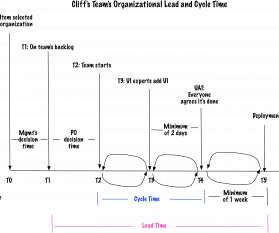Where I Think “Agile” is Headed, Part 2: Where Does Management Fit?
Johanna Rothman
AUGUST 14, 2019
In Part 1 , I wrote about how “Agile” is not a silver bullet and is not right for every team and every product. This post is about how management fits into agile approaches. Too often, managers think “agile” is for others, specifically teams of people. Managers Create and Refine the Culture.

















Let's personalize your content